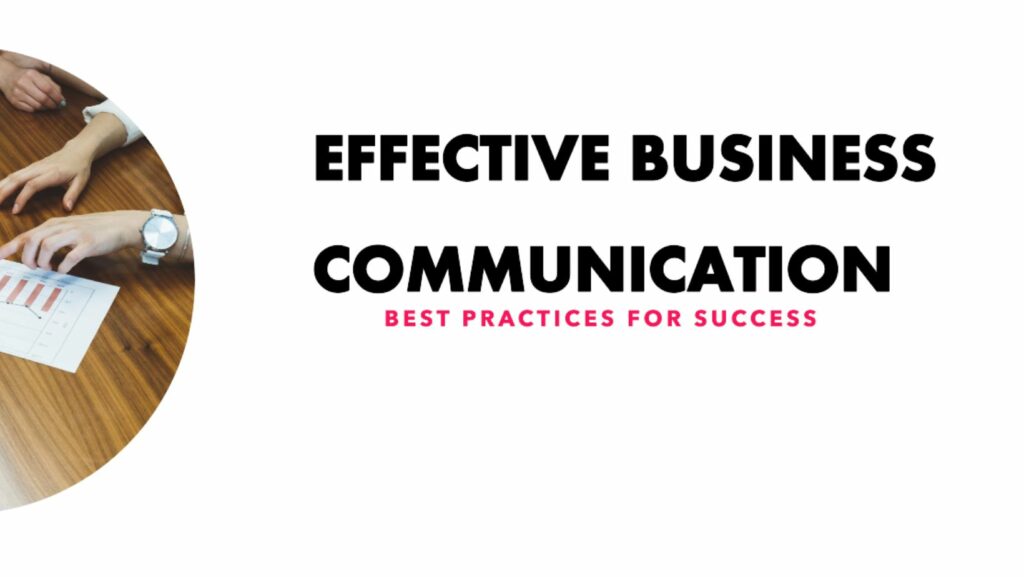
In the fast-paced world of business, communication is the glue that holds it all together. Whether you’re pitching a new idea, negotiating a deal, or simply trying to keep your team on the same page, effective communication is key. But what does ‘effective’ really mean? And how can you ensure your communication hits the mark every time?
I’ve spent years navigating the corporate world, and I’ve learned a thing or two about what works – and what doesn’t – when it comes to business communication. In this article, I’ll share my top tips and best practices to help you communicate more effectively in any business situation. Let’s dive in and explore this fascinating topic together.
Understanding Effective Business Communication
Transforming business landscapes demand proficiency in communication. Let’s delve into the art of effective business communication.
The Importance of Clarity and Conciseness
Clear, precise communication forms the bedrock of any thriving business. When you eliminate ambiguity and simplify language, you create a more transparent working environment. Think of it as taking the shortest bridge between two points—it’s not only easier but faster and more efficient. Amazon CEO, Jeff Bezos, focuses on the importance of high-standards in written communication. He’s known for his preference for six-page memos over PowerPoint presentations at meetings.
“Clarity in communication means being clear about your objectives and the message you want to convey. Avoid jargon, technical terms, and ambiguous language that could confuse your audience. Instead, use simple, straightforward language to ensure your message is easily understood.” Says Jessica Shee from iboysoft.
“Being concise means expressing your ideas in as few words as possible without losing the essence of the message. Long-winded explanations can dilute the impact of your message and lose the audience’s attention. Aim to be brief and to the point, providing just enough information to convey your message effectively.” Says Nick Edwards, Managing Director at Snowfinders
Role of Active Listening
There’s an old saying: “We have two ears and one mouth, so we should listen more than we speak.” Active listening extends beyond just auditory comprehension—it involves fully understanding the speaker’s intentions and reflecting it in the response. This skill becomes crucial in negotiations, conflicts, team discussions, and leadership roles.
Consider Elon Musk and his famous “two-question rule” at Tesla. It encourages individuals, even with little job experience, to ask two questions at every meeting. This practice doesn’t just ensure participation—it fosters a culture of listening, learning, and open dialogue, boosting overall productivity.

Remember, communication isn’t just about talking—it’s about creating an engaging, meaningful exchange. Understanding, implementing, and mastering these principles, no doubt, lends itself to better business communication.
Best Practices for Written Communication
Written communication remains crucial in business settings, key for preserving record trails and transmitting complex information.
Choosing the Right Medium
Selecting an appropriate medium for written communication seems vital, as every medium impacts how the recipient perceives it. Consider the context and choose the medium that best suits your message and audience.” Says Natalia Dávila Merlo, Content Marketing Manager at Ling. Email, an official memo, or a quick message through a chat platform like Slack – all contextually depends on the gravity of the message and the situation. “The medium you choose to communicate your message can significantly impact its effectiveness. Different situations and messages require different communication channels. For example, email is suitable for detailed, formal communication, while instant messaging is better for quick, informal exchanges.” Says Leonidas Sfyris, CTO, Need A Fixer.
Proofreading and Formatting
Proofreading and formatting also fall into a critical bracket of written business communication skills. A well-structured and error-free message conveys professionalism and enhances readability. For instance, an email report filled with typos and lacking coherent structure sends a negative image about the writer’s attention to detail.

A simple rule – aim for clarity and concision by avoiding jargon, proofreading thoroughly, and structuring into short, digestible sections. In addition, plenty of online tools provide assistance for checking grammar, punctuation, and spelling, which facilitate the production of polished, professional communications.
Enhancing Verbal Communication
Moving on from the fundamentals of written communication, let’s shift our focus towards verbal communication in the business environment. This section furthers that discussion by shedding light on the art of persuasion and addressing how to handle challenging conversations effectively. “Open communication involves creating an environment where feedback is encouraged and valued. Feedback helps identify areas for improvement and fosters a culture of continuous learning. Encourage team members to share their thoughts, ideas, and concerns openly.” Says Jon Lynn, founder of My Office Pod.
The Art of Persuasion
Mastering the art of persuasion stands as a key strategy in enhancing verbal communication. It’s the method of influencing others, carving one’s path towards a desired outcome. In business, employing tactical persuasion skills can expedite decision-making, cultivate stronger relationships, and encourage team alignment.Firstly, aligning emotions with logic forms the bedrock of persuasive communication. Citing Apple, for instance, the company skillfully wraps its products around emotional tales of innovation, progress, and creativity. Thus, entwining facts with stories magnifies the persuasive effect.
Secondly, utilizing powerful language and confident tones garners greater persuasive power. Notably, dynamic speakers like Michelle Obama and Richard Branson consistently exhibit these characteristics, often prompting decisive actions from their listeners.
Lastly, conveying empathy towards the audience’s viewpoint boosts persuasive capacity. Demonstrating an understanding of their concerns, as the customer-centric approach of Amazon does, results in productive conversations and agreements. “Maintaining professionalism in communication involves using appropriate language and tone. Avoid slang, colloquialisms, and overly casual language in professional settings. Be respectful and courteous in all interactions.” Says Holly Darani, the Content Head at UNAGI Scooters
Conclusion
So, we’ve journeyed together through the landscape of effective business communication, from the importance of clarity and brevity to the power of active listening. We’ve explored the strategies of industry giants like Jeff Bezos and Elon Musk and delved into the nuances of written, verbal, and non-verbal communication. We’ve seen how choosing the right medium and using persuasive language can elevate our messages, and how proofreading can save us from unnecessary errors. We’ve also discovered the hidden language of gestures and body language, and the impact of visual aids in our communication toolkit. As we’ve learned, non-verbal cues aren’t just add-ons, they’re integral to our overall communication strategy. So let’s put these best practices to work and truly harness the power of effective business communication. Remember, it’s not just about what we say, but also how we say it.


